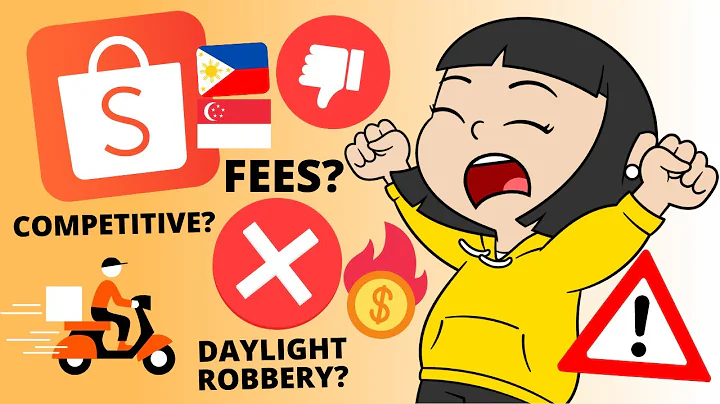The Ultimate Guide to Pricing Your Products for Dropshipping Success
Table of Contents
- Introduction
- Determining the Cost of Goods
- Additional Costs Associated with Selling
- Calculating the Total Cost to Sell a Product
- Setting a Minimum Selling Price
- Factors to Consider When Pricing a Product
- Monitoring Sales and Adjusting Prices
- The Importance of Testing and Evaluating
- Determining Profitability with Ad Costs
- Tracking Monthly Expenses
How to Price Items for Selling - A Comprehensive Guide
In this guide, we will explore the process of pricing items that you're selling. This is particularly important for new members joining our platform, as we currently do not have the feature to recommend selling prices incorporated into the app. However, we will be introducing this feature in the near future. In the meantime, it's crucial to have a general idea of how to determine the pricing for your items. This guide will provide you with step-by-step instructions on calculating costs, setting selling prices, and monitoring sales to ensure profitability.
1. Introduction
Before delving into pricing strategies, it's essential to understand the different costs associated with selling a product. We will break down the costs into various categories, including the cost of goods, handling fees, confirmation fees, and shipping costs. By carefully analyzing these expenses, you can determine the minimum selling price needed to cover your costs and generate a satisfactory profit.
2. Determining the Cost of Goods
The cost of goods is the amount you spent to acquire or produce the products you're selling. It includes the manufacturing or wholesale price, packaging materials, and any other expenses directly related to obtaining the items. Calculating the cost of goods accurately is crucial as it forms the foundation for determining the selling price and potential profit margin.
3. Additional Costs Associated with Selling
Apart from the cost of goods, there are other expenses to consider when pricing your items. These costs include handling fees, confirmation fees (optional), and shipping costs. Handling fees account for the expenses involved in packaging and preparing the item for shipment. Confirmation fees are additional charges for confirming the order, should you choose to avail this service. Shipping costs vary depending on the size and weight of the item and the shipping destination. It's essential to research average shipping costs for similar items to estimate the overall expense accurately.
4. Calculating the Total Cost to Sell a Product
Once you have determined the individual costs, it's important to tally them up to determine the total cost to sell a product. This includes the cost of goods, handling fees, confirmation fees (if applicable), and shipping costs. Adding up these expenses will give you a clear understanding of the minimum amount you need to sell the item for to cover your costs.
5. Setting a Minimum Selling Price
To ensure profitability, it's crucial to set a minimum selling price that covers all the expenses associated with selling the item. As a rule of thumb, many sellers aim for a minimum profit of 500 pesos per item. This provides a reasonable margin while accounting for costs and leaves room for potential adjustments. By setting a minimum price, you guarantee a certain level of profitability and avoid selling at a loss.
6. Factors to Consider When Pricing a Product
When setting the selling price, there are several factors to consider. These factors include the perceived value of the product, target audience, the quality of creative (e.g., video ads and images), and the overall desirability of the product. Evaluating these factors can help you determine whether you can price the product higher than the baseline and increase your potential profit margin.
7. Monitoring Sales and Adjusting Prices
Once you have set the initial selling price, it's important to monitor sales and evaluate its performance. If the sales are steady and profitable, consider gradually increasing the price. However, if the product struggles to sell, it may indicate issues with audience targeting, the product itself, or the quality of the creative. In such cases, it may be necessary to adjust your pricing strategy, lower the price slightly, and re-evaluate the results.
8. The Importance of Testing and Evaluating
To determine the most effective selling price, it's crucial to conduct testing and evaluation. By starting with a conservative price and gradually increasing it, you can gather data on audience response and adjust accordingly. Testing allows you to iterate and refine your pricing strategy for optimal results. It's essential to track sales, analyze customer feedback, and make informed decisions based on data.
9. Determining Profitability with Ad Costs
While determining the profitability of each sale, it's important to factor in the cost of advertising. If you are running ads to promote your products, you need to calculate the total advertising cost and subtract it from the gross revenue. This will give you an accurate measure of the profitability of each sale, considering both the cost of goods and advertising expenses.
10. Tracking Monthly Expenses
In addition to calculating the profitability of individual sales, it's crucial to track your monthly expenses. This includes costs such as Shopify subscriptions, app fees, and any miscellaneous expenses related to running your business. By maintaining a profit and loss sheet, you can assess your overall financial health and make informed decisions about pricing adjustments and budget allocation.
By following these guidelines and regularly evaluating your pricing strategy, you can ensure that your items are priced competitively while maintaining profitability. Remember to consider factors such as costs, perceived value, and market demand when setting your prices. Through consistent monitoring and testing, you can optimize your pricing strategy and achieve success in your online selling endeavors.



















